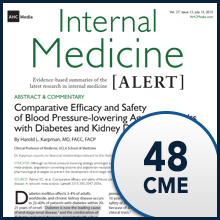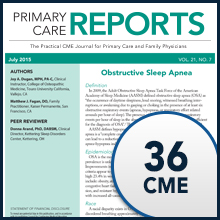PCPs, Patients Often at Odds Over Pain Treatment Goals
March 20th, 2017
DAVIS, CA – Primary care physicians and their patients often have different goals when it comes to treatment of pain, which can lead to a contentious relationship, a new survey suggests.
While patients are most concerned about reducing pain intensity and identifying the cause, physicians are more likely to prioritize improved physical function and reduced medication side effects, including dependency, according to the research published in The Clinical Journal of Pain.
In response, a study team led by University of California-Davis researchers recommends pain-focused communication training for physicians.
"We wanted to understand why discussions about pain between patients and doctors are often contentious and unproductive," explained lead author Stephen Henry, MD, MSc, assistant professor of internal medicine at UC Davis. "Primary care physicians treat the majority of patients with chronic pain, but they aren't always equipped to establish clear, shared treatment goals with their patients."
Recent state and federal guidelines recommend that doctors work collaboratively with patients on observable goals for pain treatment, but that’s not happening. "It is critical for doctors and patients to be on the same page and not working at cross purposes," Henry said.
For the study, the researchers focused on 87 patients receiving opioid prescriptions for chronic musculoskeletal pain and 49 internal or family medicine physicians from two UC Davis Medical Center clinics in Sacramento. In most cases, patients were seeing their regular physicians, the report notes.
Patients completed questionnaires to rate their experiences and rank their goals for pain management immediately following clinic visits between November 2014 and January 2016. At the same time, physicians completed their own questionnaires about the level of visit difficulty, along with their own rankings of goals for the patient's pain management.
Overall, 48% of patients ranked reducing pain intensity as their top priority, and 22% ranked finding a diagnosis as most important. In comparison, physicians ranked improving function as the top priority for 41% of patients, and ranked reducing medication side effects as most important for 26%.
In fact, in 62% of visits, the physician's first- and second-ranked treatment priorities did not match the patient's top-ranked treatment priority.
While, in general, primary care physicians usually rank only about 15% to 18% of patient visits as difficult, they reported that 41% of the pain management encounters fell into that category, defining them as challenging or emotionally taxing. Patients were more positive about the experiences, the report notes.
“Patients and physicians prioritize substantially different goals for chronic pain management, but there is no evidence that agreement predicts patient experience or physician-reported visit difficulty,” study authors concluded. “Primary care physicians may have adapted to new recommendations that emphasize functional goals and avoidance of long-term opioid therapy, whereas patients continue to focus on reducing pain intensity.”

FEATURED RESOURCE




